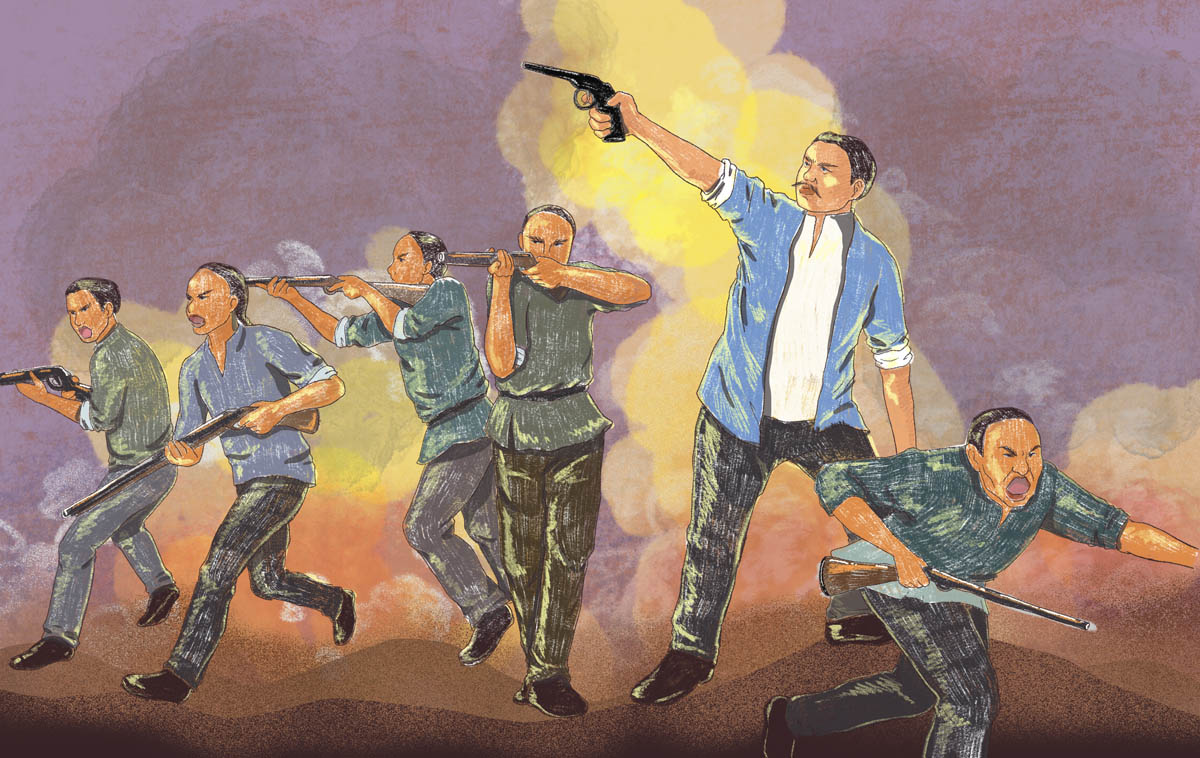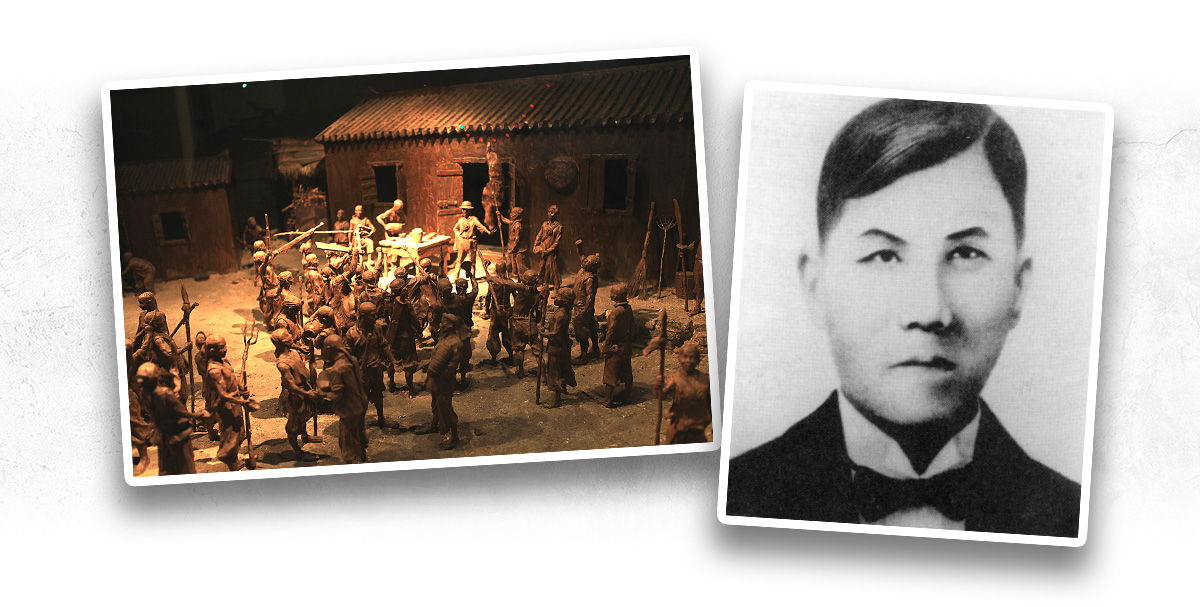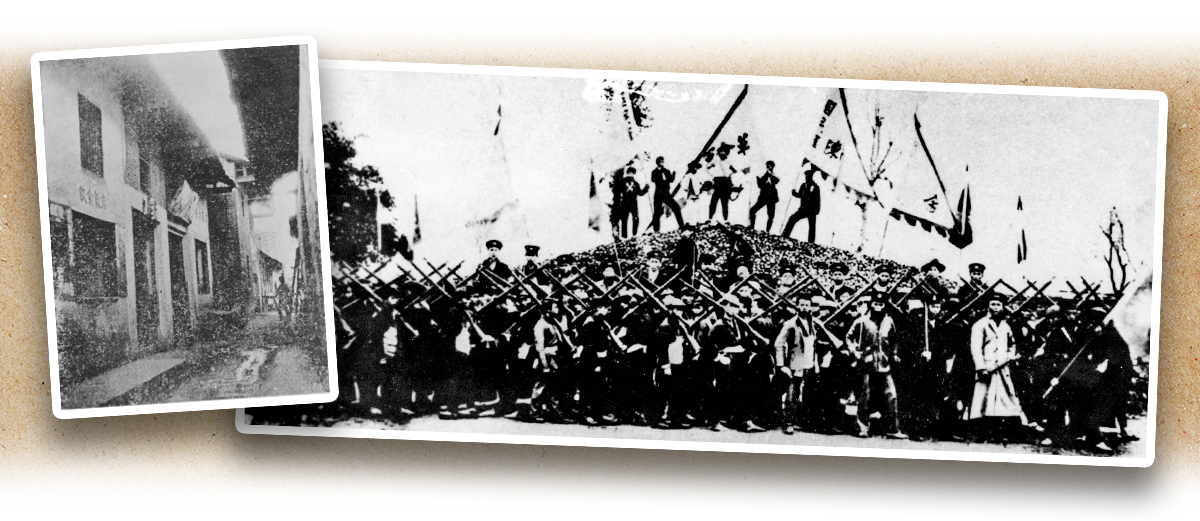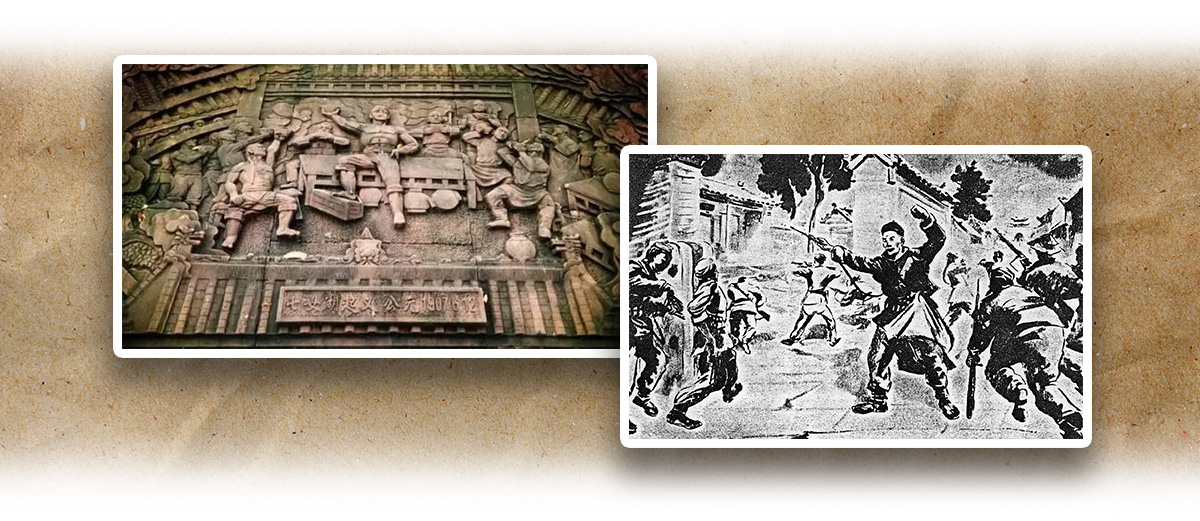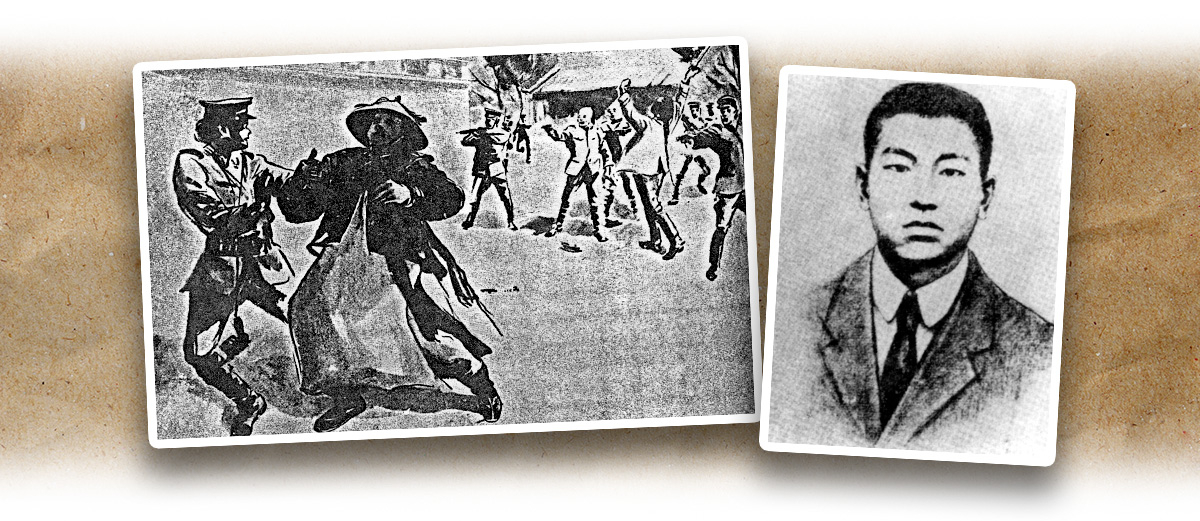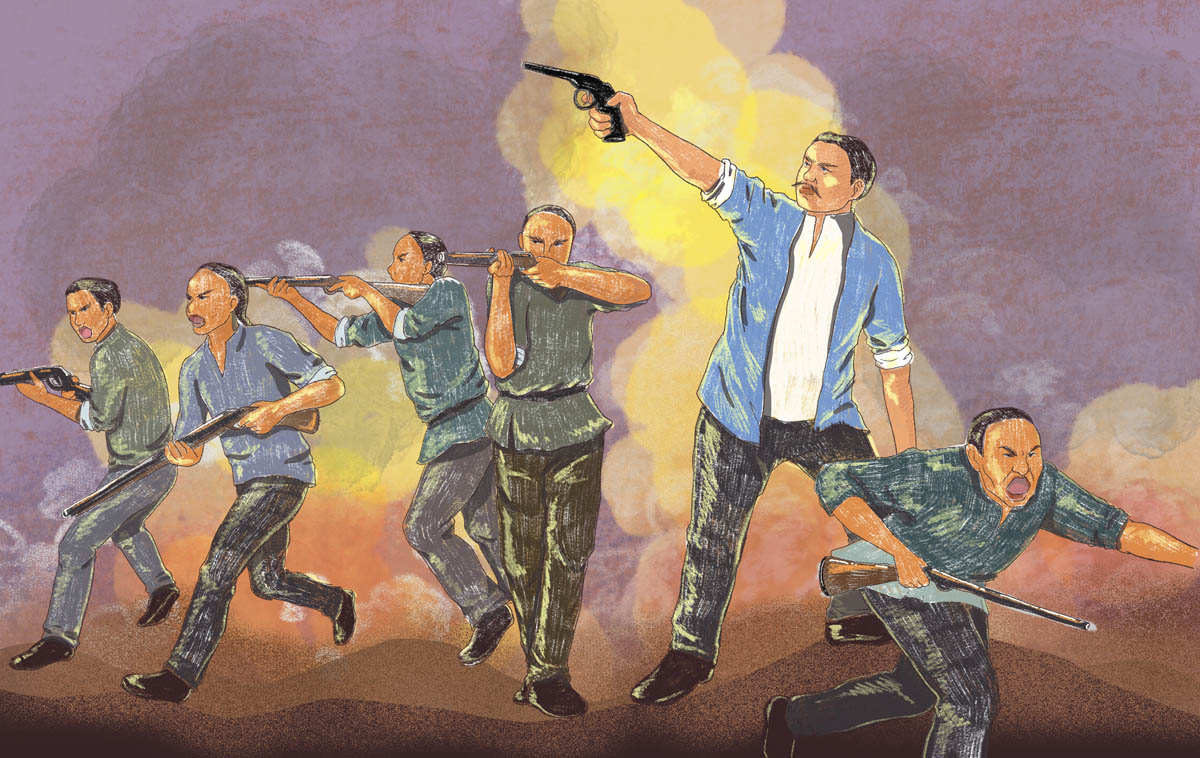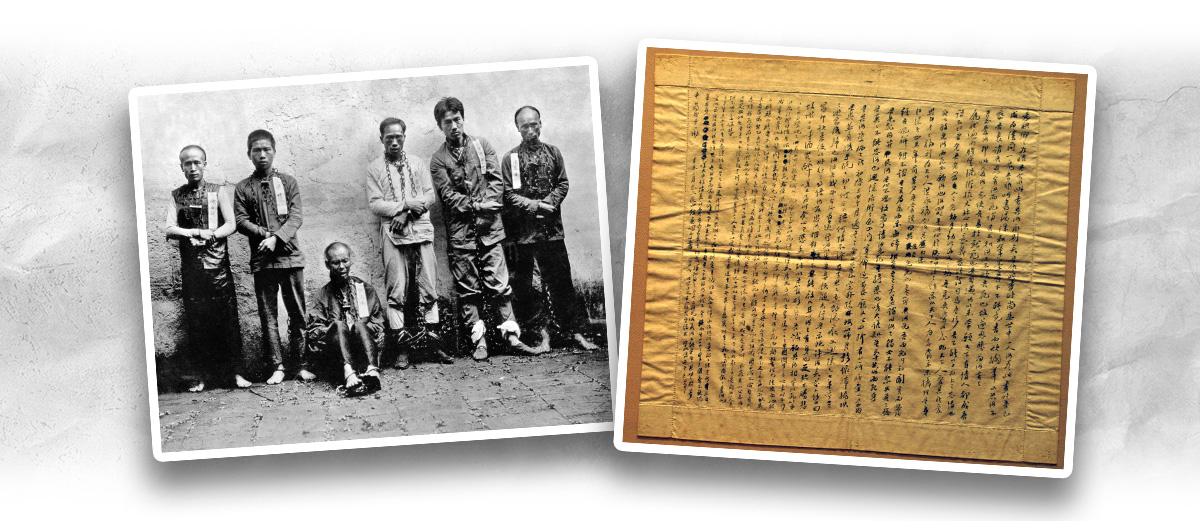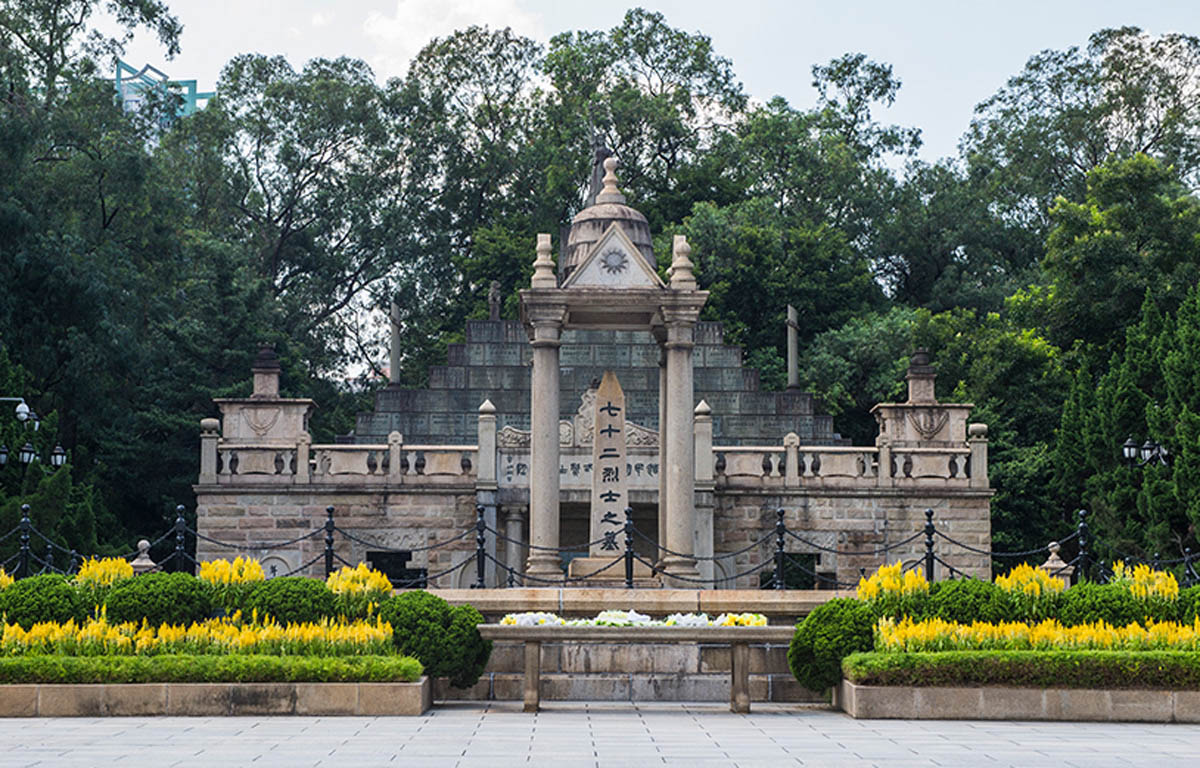Resolved to topple the Qing regime and build a republic, the revolutionaries rose up in arms. From the establishment of the Revive China Society (興中會) in 1894 to the 1911 Revolution, some 30 anti-Qing uprisings were staged by various revolutionary groups. The Revive China Society and its successor, the United League (同盟會), were particularly notable for rallying the overseas Chinese, secret anti-Qing societies, and even the new army to plan, launch, and spearhead at least 10 operations. Some of them and the key losses incurred are as follow:
(1) an uprising in Guangzhou (廣州) in October 1895 failed due to an intelligence leak. Lu Haodong (陸皓東) was captured and executed;
(2) an uprising in Huizhou (惠州), Guangdong Province (廣東), in October 1900 led to the death of Shi Jianru (史堅如), Yeung Ku-wan (楊衢雲), Zheng Shiliang (鄭士良), and other revolutionaries in succession.
(3) an uprising that spanned Pingxiang (萍鄉), Liuyang (瀏陽), and Liling (醴陵) in the provinces of Jiangxi (江西) and Hunan (湖南) in December 1906 cost the lives of many revolutionaries, including Liu Daoyi (劉道一);
(4) an uprising in Huanggang (黃岡), Chaozhou (潮州), Guangdong in May 1907;
(5) an uprising in Qinuhu (七女湖) of Huizhou in June 1907;
(6) a Restoration Society-led uprising in Anqing (安慶), Anhui Province (安徽), in July 1907 resulted in successive capture and execution of revolutionaries including Xu Xilin (徐錫麟) and Qiu Jin (秋瑾);
(7) an uprising that spanned Qinzhou (欽州), Lianzhou (廉州), and Fangcheng (防城), cities near the Guangdong-Guangxi (廣西) border, in September 1907;
(8) an uprising in Zhennan Pass (鎮南關), Guangxi, in December 1907;
(9) an uprising that spanned Qinzhou (欽州), Lianzhou (廉州) and Shangsi (上思), in March 1908;
(10) an uprising in Hekou (河口), Yunnan Province (雲南), in April 1908;
(11) an uprising by the Guangzhou New Army (廣州新軍) in February 1910;
(12) the April 1911 Guangzhou Uprising (later known as the Yellow Flower Mound﹝黃花崗﹞Uprising) led by Huang Xing (黃興). Grievous death toll was resulted.
|
|
Those martyred during the April 1911 uprising in Guangzhou led by Huang Xing were commonly referred to as the “72 revolutionary martyrs of the Yellow Flower Mound. Is “72” the number of lives sacrificed during the operation? Why did the revolutionaries brave death and successive failures to stand against the Qing regime, given that they were hopelessly outmatched in combat by the Qing military? |
|
|
See answer below. |
A statue of Lu Haodong and the Lu Haodong Revolutionary Martyr’s Cemetery (陸皓東烈士墳場) in Zhongshan (中山). In the October 1895 Guangzhou Uprising launched by the Revive China Society, the “white sun in a blue sky” emblem designed by Lu made its first appearance on a flag hoisted by the revolutionaries. Unfortunately, the revolt failed due to an intelligence leak. Lu was only 27 years old when he was captured and killed. Sun Yat-sen (孫中山) called him “the first person in Chinese history who sacrificed his life for the revolution for the republic”.
On the left: the scene of the Huizhou Uprising, reenacted with models; on the right: Zheng Shiliang, a revolutionary leader. In October 1900, the Revive China Society launched its second uprising in Huizhou. The aftermath of the failed operation saw Shi Jianru, Yeung Ku-wan, and Zheng being captured and executed or assassinated one after the other.
On the left: the site where the Pingxiang-Liuyang-Liling Uprising was launched; on the right: the revolutionaries holding an oath of allegiance ceremony prior to the uprising in Huanggang, Chaozhou. After its establishment in 1905, the United League launched an uprising that spanned Pingxiang, Liuyang, and Liling in Jiangxi and Hunan in December 1906. The attempt was quashed by the Qing military and led to the death of Liu Daoyi, its leader. The incident became known as “Ping-Liu-Li Uprising”. In May 1907, the League failed the Huanggang Uprising as well.
The relief sculpture depicting the Qinuhu Uprising (七女湖起義) and an illustration of the battle during the Qin-Lian-Fangcheng Uprising (欽廉防城起義). In June and September 1907, the United League launched one uprising in Huizhou and another in Qinzhou, Lianzhou, and Fangcheng in the Guangdong-Guangxi border area respectively. Both attempts failed.
In July 1907, the Restoration Society (光復會) failed an uprising. Xu Xilin (left), followed by Qiu Jin (right), were captured and executed in Anqing, Anhui and Shaoxing (紹興), Zhejiang Province (浙江) respectively.
In December 1907, the United League sent Huang Mingtang (黃明堂) and other members to lead an uprising in Zhennan Pass, Guangxi. Sun Yat-sen and Huang Xing raced from Vietnam to Zhennan Pass to command at the frontlines (left). During the battle, Sun fired on the Qing army with a cannon himself. In March 1908, a group of revolutionaries led by Huang Xing attempted to capture the region encompassing Qinzhou, Lianzhou, and Shangsi. It became known as the “Qin-Lian-Shangsi Uprising” (right).
In April 1908, the United League staged an uprising in Hekou, Yunnan. In February 1910, another revolt was launched by the Guangzhou New Army. However, both attempts failed. On the left is an illustration depicting the Hekou Uprising; on the right is a photo of Ni Yingdian (倪映典), the leader of Guangzhou New Army Uprising. He was killed in the incident.
The successive failures did not weaken the revolutionaries’ resolve to overthrow the Qing dynasty and they continued to revolt. On 27 April 1911 (or 29 March by the Chinese lunar calendar), Huang Xing led a team of more than a hundred in a direct assault on the Viceroy of Liang-Guang (兩廣總督) office and engaged the Qing force in fierce battle.
Zhao Sheng (趙聲) and Huang Xing served as the uprising’s chief commander and second-in-command respectively. The initial plan was to approach the target building by 10 columns with a force of 800 people, but was later reduced to four columns. The date of attack was postponed for various reasons. Unfortunately, due to communication problems, Huang’s column ended up being the only one to revolt on 27 April. They succeeded in breaking into the viceroy’s office, only to find that Zhang Mingqi (張鳴岐), the viceroy, had already fled. They proceeded to burn the office and clashed with the Qing military, who was vastly superior in numbers and arms. The revolutionaries were defeated in the end. Huang, who lost two fingers in the battle, fled back to Hong Kong. The defeat and the loss of comrades were too much for him to bear. The grief-stricken Zhao died of illness soon after.
The Qing force annihilated the 1911 Guangzhou Uprising. A staggering number of revolutionaries were killed, injured, or captured. All the captives went to their deaths with equanimity, many of whom had written their wills prior to the uprising. Among them, Lin Juemin’s (林覺民) Letter of Farewell to my Wife (《與妻訣別書》) remains the most known of this kind. On the left are the six captured revolutionaries right before their execution; on the right is Lin’s Letter of Farewell to my Wife written on a handkerchief.
Many of the revolutionaries who participated in this uprising were young and well-educated. All of them made the choice to sacrifice without regret and face death with equanimity. Not only were they the finest comrades of the United League, but they were also regarded as national heroes. The average age of the 72 revolutionary martyrs was only 29.57 years old. Among them, nine were student returnees from Japan, including Lin Juemin, Fang Shengdong (方聲洞), and Yu Peilun (喻培倫). They were only 24 or 25 years old when they were killed. The campaign cost the United League grievous loss, and brought Sun Yat-sen to lament, “In one fell swoop, the finest comrades of my party were consigned to the flames.”
Most of the revolutionaries who participated in the uprising on 27 April 1911 lost their lives. Their remains were buried in Huanghuagang (Yellow Flower Mound), an eastern suburb of Guangzhou. The names of 72 of the victims were confirmed shortly after the uprising failed. After the founding of the Republic of China, a mausoleum and monument were erected to mark the site, which became known as the Yellow Flower Mound Mausoleum of the 72 Revolutionary Martyrs (黃花崗七十二烈士墓).
After the failed revolt, Pan Dawei (潘達微), a member of the United League, risked blowing his own cover to collect and inter the remains of 72 comrades. Later, more remains martyrs were found. Initially called Honghuagang (Red Flower Mound﹝紅花崗﹞), the site was renamed Huanghuagang (Yellow Flower Mound) after the interment of the martyrs there. The yellow flower refers to the chrysanthemum, a flower that blooms in autumn, undeterred by frost. It was used to symbolise the martyrs’ indomitable spirit. Accordingly, the Guangzhou Uprising also became known as the “Huanghuagang Uprising (Yellow Flower Mound Uprising)”. At a vigil held in 1912 to mark the first anniversary of the Yellow Flower Mound Uprising, Huang Xing paid obeisance to the martyrs with an elegiac couplet:
“Fighting fiercely, 72 stalwart warriors stained the spring clouds with their righteous blood; with sadness, 400 million countrymen watched as the autumn rain drenched the chrysanthemums.”
As the first and second lines of the couplet ended with the words “righteous blood” and “chrysanthemums” respectively, “chrysanthemums stained with righteous blood” later became a metaphorical expression of the 72 martyrs’ heroism. Although the Yellow Flower Mound Uprising was a failure, the martyrs’ heroic deaths set a greater revolutionary movement in motion. Thus, the incident is seen as the herald of the 1911 Revolution that would take place a few months later. Sun Yat-sen spoke highly of the Yellow Flower Mound Uprising:
“During the late Qing era, our members underwent many trials and tribulations. With staunch resolve, we battled those who leeched from the people, stumbling time and again and suffering devastating losses. Among these failed attempts, the siege on the office of the Viceroy of Liang-Guang was the most disastrous; in one fell swoop, the finest comrades of my party were consigned to the flames. It was a heavy blow to us indeed! However, in that battle, so much righteous blood was spilled, and so all-pervading was noble spirit unleashed, that even the foliage was filled with sorrow and the faces of the elements paled. The will of our countrymen, long suppressed, was most mightily roused. Their accumulated anger, like a gigantic wave overflowing a gully, was irrepressible, and in less than half a year the Wuchang Revolution (武昌革命) succeeded. Thus, the significance of this campaign is such that it struck awe into heaven and earth and moved ghosts and deities alike to tears. Like the 1911 Revolution in Wuchang, this event will be etched in time immemorial.”
|
|
Those martyred during the April 1911 uprising in Guangzhou led by Huang Xing were commonly referred to as the “72 revolutionary martyrs of the Yellow Flower Mound. Is “72” the number of lives sacrificed during the operation? Why did the revolutionaries brave death and successive failures to stand against the Qing regime, given that they were hopelessly outmatched in combat by the Qing military? |
|
|
Initially, among the interred victims of the Guangzhou Uprising, only 72 of their names were identified. Therefore, the revolutionaries who sacrificed their lives in this operation are generally referred to as the “72 revolutionary martyrs”, where 72 was just an approximate number. As they were all buried in Huanghuagang, they were collectively referred to as the “72 revolutionary martyrs of the Yellow Flower Mound”. More remains were discovered later. It was believed that at least 86 people either died in battle or executed. Although the revolutionaries were hopelessly outmatched in combat by the Qing military, they continued to oppose the Qing regime fearlessly. Undaunted by heavy losses and repeated failures, they continued to fight on the strength of their pure love for the nation. The patriotic sentiment was expressed in the letters of farewell written by the Yellow Flower Mound martyrs prior to the uprising: In his Letter to My Father Before I Go to a Righteous Death (《赴義前稟父書》), Fang Shengdong wrote: “Honoured Father, I humbly kneel as I inform you that this is the last letter in your son’s own hand. If it reaches you, it means that your son is already long gone from the world... As a man, I have not been able to benefit the nation and bring happiness to my countrymen by accomplishing great deeds or initiating some grand undertaking. Dying in battle, then, can also be a cause for joy. Moreover, it is only right for me to die for my motherland... Someday in the future, after the revolution succeeds, all my family members will live in a new China, and innumerable generations of their descendants will be able to live safe and free lives forevermore. Then, even though I may be dead, I will rest in peace under the earth...” Lin Juemin, in his Letter of Farewell to my Wife addressed to his pregnant wife Chen Yiying (陳意映), wrote: “... I love you most dearly, and it is this love that has given me the courage to face death... If you understand this wish of mine, then though you may still weep, you will also hold the people of this nation in your thoughts, and be happy with the knowledge that our sacrifices - my life and your well-being - have been made for an enduring greater good...” Overcome by sadness after Lin’s death, Chen gave birth prematurely to a son and passed away from depression two years later. Lin Zhongxin (林仲新), Lin’s posthumous son, lived till 1983. |
Sources of most photos used in this feature piece: Fotoe (pictures 1-9), Visual China Group (picture 10).




